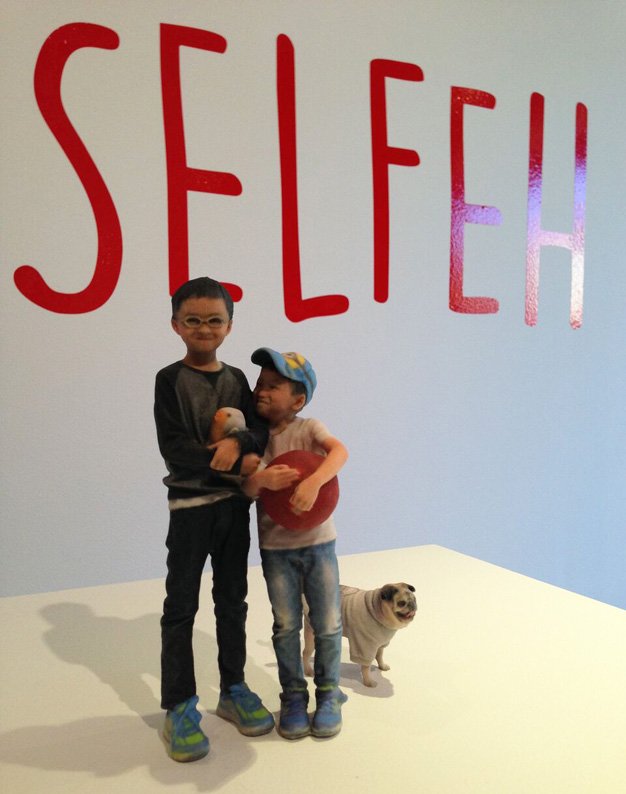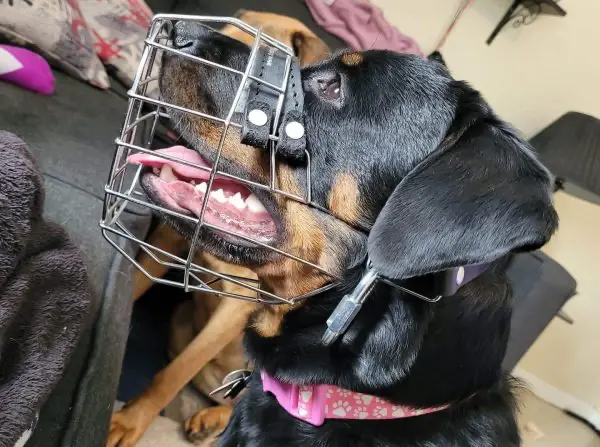
A local 3D printing company is taking its twist on portrait photography to the mainstream. Selftraits, which is owned by Etobicoke-based Objex Unlimited, is opening at 545 Queen West on December 10. The shop offers customers a chance to have 3D-printed portraits made using 3D scanning technology.
“When you’re 3D scanning someone, there are multiple ways to do it. The best way to capture a person is called photogrammetry, which is what we use. That is essentially taking a lot of pictures and finding overlapping points and stitching them together to create a 3D image,” Objex Unlimited president Steve Cory explains. “After we have the 3D model ready, we 3D print them. The method that we use for 3D printing people is ColourJet printing.”
A professional photographer is on hand to take the photographs. Before I get my 3D scan taken at a media preview, I’m asked to think of a “signature pose” or an expression that best captures my personality. Unsure of what this might be, I strike three unremarkable stances, hearing the click of 135 cameras go off each time. The photographer assures me that I “did great,” and about a minute later, is able to pull up hundreds of digital photographs on a computer screen showing just about every inch of my body.

Michelle da Silva
Over 100 cameras capture every inch of a person during the 3D scan.
Outside of the photography tent, black and white photographs of previous customers, which include local celebrities Jully Black and Jeanne Beker, hang on the walls.
“Someone actually proposed to his fiancé inside our photo booth,” Cory says, pointing to one of the portraits. “He hid a little sign that said, ‘Will you marry me?’ And we captured the scene in real-time and made six models.”
3D-printed portraits are also popular with families and groups of friends. Around this time of year, parents often get 3D portraits made of their children as gifts for grandparents and other family members.
Once the 3D scans are complete, customers choose their favourite pose for printing. The scans are shown to a team of digital sculptors, who fix and enhance any missing details, and then those files are sent to the 3D-printing production facility in Etobicoke.

Michelle da Silva
Digital sculptors perfect details from a 3D scan before it gets printed.
Cory has been working in the medium for more than four years. In 2012, he scanned a person for the first time using a handheld scanner.
“We didn’t really know what we were doing at that time,” he says. “But I thought it was amazing.”
Eventually, his company upgraded to higher-quality scanners and industrial printers. At Selftraits, the back room contains a large white tent fitted with 135 Canon DSLR cameras. Cory says that DSLR cameras are preferred for their ability to capture motion.
“The reason why the booth is so big is so we can capture two people at once. You can jump and stretch your arms and legs, and we’ll pretty much cover 100 percent of your geometry in here,” he says. “When you do an instantaneous scan of someone, you can catch the expression on their face. I don’t want to make a model that looks like somebody. It has to be somebody.”
3D ColourJet printing uses gypsum powder, which is typically used for drywall. For printing, a thin layer of powder is spread across an industrial printer to create a single slice. Cory says that Selftrait prints consist of around 2,000 slices.
“When it’s done, we take it out of the powder with vacuum cleaners and paintbrushes, and we de-powder it all, and then dip it in crazy glue. We do some sanding, and then we dip it in wax. It’s very easy to break them,” he notes.

Michelle da Silva
A large white tent with cameras dominates the back room of Selftraits. Photographs of customers hang on the walls.
At the Selftraits shop, customers will be able to order a five-inch “pocket-size” version of themselves for $120, or a six-inch “mini” for $240. The scanning session takes 15 minutes, and then customers can pick up their 3D portrait in a week.
Due to the materials used in the printing process, Cory says that the 3D portraits should be treated like art – kept away from water and directly sunlight – and handled with care. He’s hoping that as 3D printing technology gets better, so will the durability of the prints. For now, Cory and his team enjoy the challenge of trying to capture customers as realistically as possible, and love seeing their reactions when they are faced with a 3D printout of themselves for the first time.
“People are the hardest thing. Scanning a couch, it doesn’t move. Scanning a side of a building or even a statue, it’s just a function of time,” he says. “With people, you’ve got to be perfect or it looks wrong.”
michelled@nowtoronto.com | @michdas












